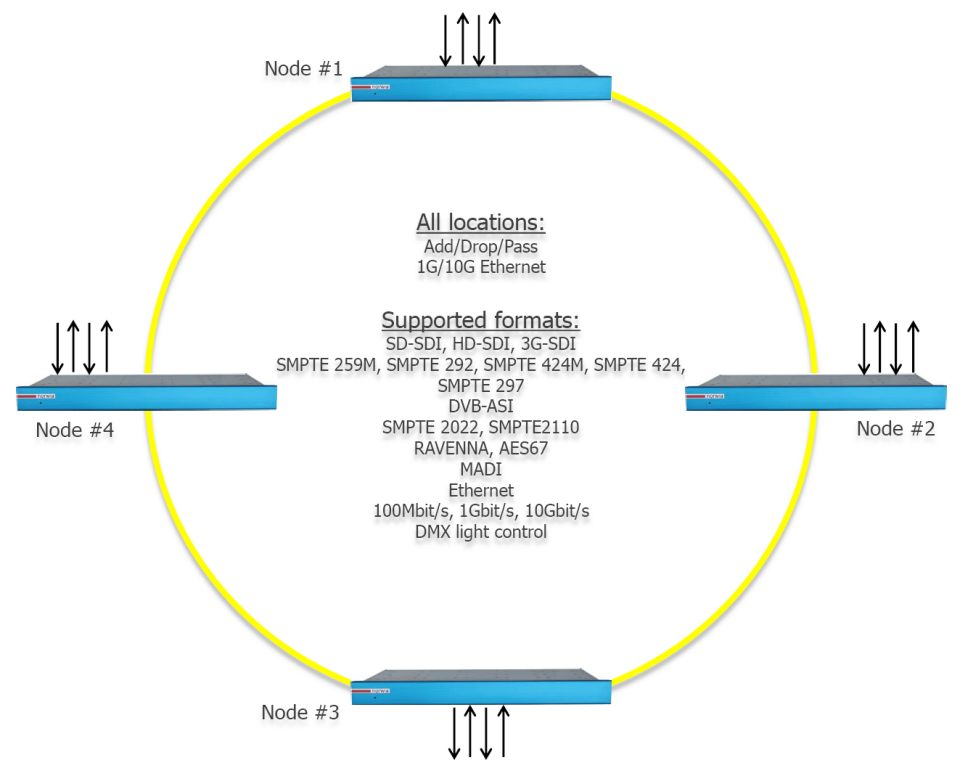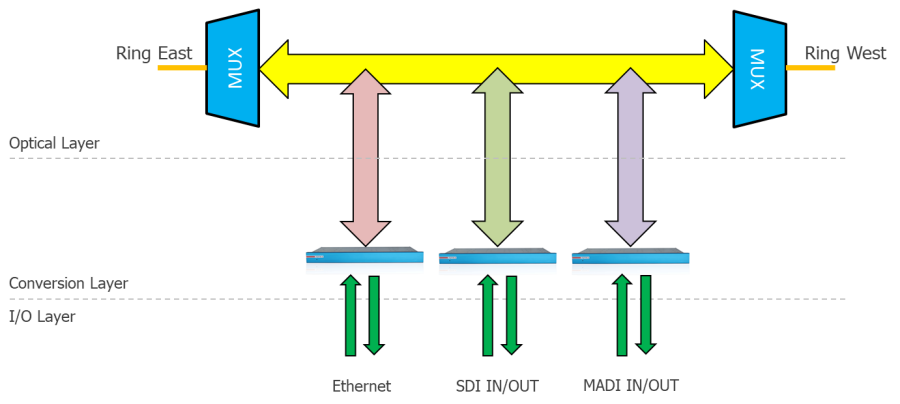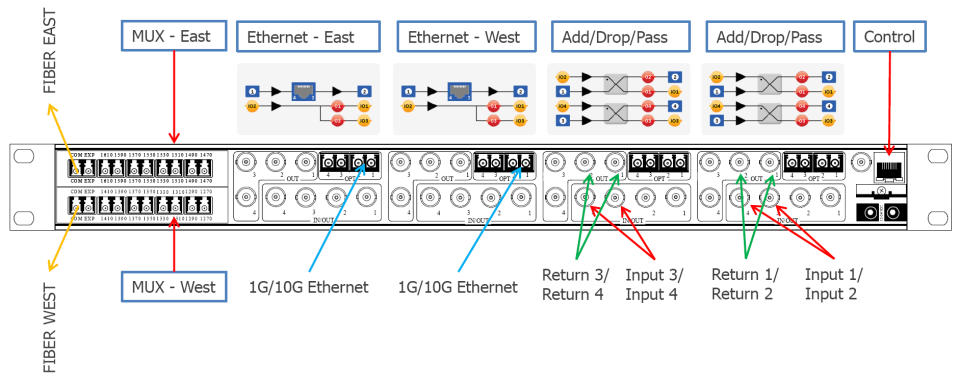
FIBER RING NETWORKS
Although a broadcast fiber network is usually thought of as having a star topology, it is also possible to
build a broadcast network as a ring. This configuration has the advantage of providing a redundant pathway
if a fiber should fail. A ring topology is often used in applications where long distances may make it difficult
to run fiber in a star formation from a central studio and where downtime must be minimized.
Optical ring structures can also be designed to provide optical redundancy, so called east/west redundancy
architectures. They can incorporate CWDM structures to minimize fiber and installation cost. By using the
change-over functionality, networks can easily be managed in case of fiber breakage.
Our ring structure systems are simple to design, and keeps costs down and reliability up.

Fiber ring principle with miniHUB nodes
The key to the ring topology is to make SDI video, audio and Ethernet available at any site. Norwia has several
operation modes available and the customer needs will decide which mode is to be used.
Below you can see a principle of how the node is built with Norwia's miniHUB product. It shows three layers of
operation where the signal mode setting is decided at the conversion layer.

Layer principle for a node
When setting up a fiber ring network, the unique needs of each node has to be defined. Typical operational modes are listed below:
- Automatic Add/Drop/Pass - Gives dynamic access to all nodes in the ring
- Fixed channels conversion with MCR Redundancy Switching - Dedicates protected channels to fixed 24/7 operated nodes
- 1G/10G Ethernet with east/west redundant connection - Enable protected network services for server archive access, IP signal transport, data control signls and in-band management of the Norwia RCONmini monitoring system

Example of simple 6 channel miniHUB node with OC-4B-SDI module installed
System areas
- Metro ring networks for events
- In-house building ring networks
- Multi drop site circuits
- Metro ring networks for News gathering
- MCR Backup sites with Dual Signal redundancy
- Metro ring networks for Remote production
- Sports arena ring networks
System Benefits
- Built to your needs
- Multiplexed or multiple fiber systems
- East/west fiber protection on per signal basis
- Site bypass on ring structure to enable continuity of fiber system
- Automatic switching available on input connection (manual control available)
- Optical signal level monitoring in real time
- No complex TDM processing
- Lower cost compared to other ring structures products
Customer Experience Studies
NRK RING NETWORKS: "We can go live with just a few minutes' setup and we have achieved 100% availability since launch." - Erik Hansen, NRK
See: NRK Ring Networks
Recommended products
miniHUB is the flagship product from Norwia and boast
an incredible array of users in the Broadcast and Telecommunication fields.
